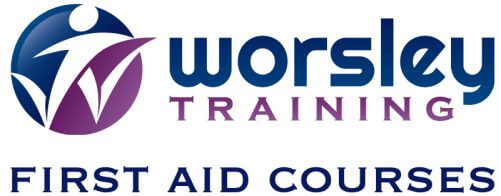Choking
An Article by Worsley Training – First Aid Training in and around Wiltshire

Choking is one of the biggest fears of most parents. It causes great anxiety when your babies are ready to start weaning, makes you chop grapes in half (lengthways) for years and causes you to panic whenever your child splutters while eating a hot dog. But do you actually know what to do if your child choked on a sweet, some food or a small object?
Firstly, it’s good to know the difference between gagging (a natural reflex) and choking (when food is lodged in the airway). Children, especially young ones, often gag while they’re eating. It’s completely normal and doesn’t need any parental intervention. Choking on the other hand is life threatening, as it can cause your child to stop breathing.
Most importantly here’s what not to do if this ever happens – don’t stick your finger in your child’s mouth to try to get the particle out unless you can see it at the front of the mouth. If it is lodged in your child’s airway, then there simply will not be enough space for your finger to get past whatever it is to hook it out, so it will just get pushed further down.
So, what should you do? Firstly, try not to panic! Take deep breaths as staying calm is critical for both you and your child in any situation where you need to administer first aid. Then you need to force air from their lungs up the airway to force the blockage out – just like popping a cork out of an empty plastic bottle by squeezing it hard – by following these basic steps:
1. Encourage them to cough (if old enough to understand this instruction).
2. If they can’t, then give up to five firm slaps on their back between their shoulder blades. Babies and small children should be placed over your lap with their head pointing downwards as gravity will help. Check after each slap to see if the obstruction has cleared before doing another one.
3. After that give up to five abdominal thrusts by wrapping your arms around them from behind, placing one fist on their tummy button and your other hand on top of it, and then pull in and up sharply. Check between each thrust to see if it has worked. (Give chest thrusts to a baby under one year old)
4. Ask someone to call 999 and keep repeating the above sequence until it clears.
5. If they lose consciousness, you will need to start CPR.
To feel really confident, it’s always best to attend a paediatric first aid course at least every 3 years to go through these techniques safely on plastic manikins – practice makes perfect!
Book onto one of our courses today and start feeling confident about first aid – Book a course
